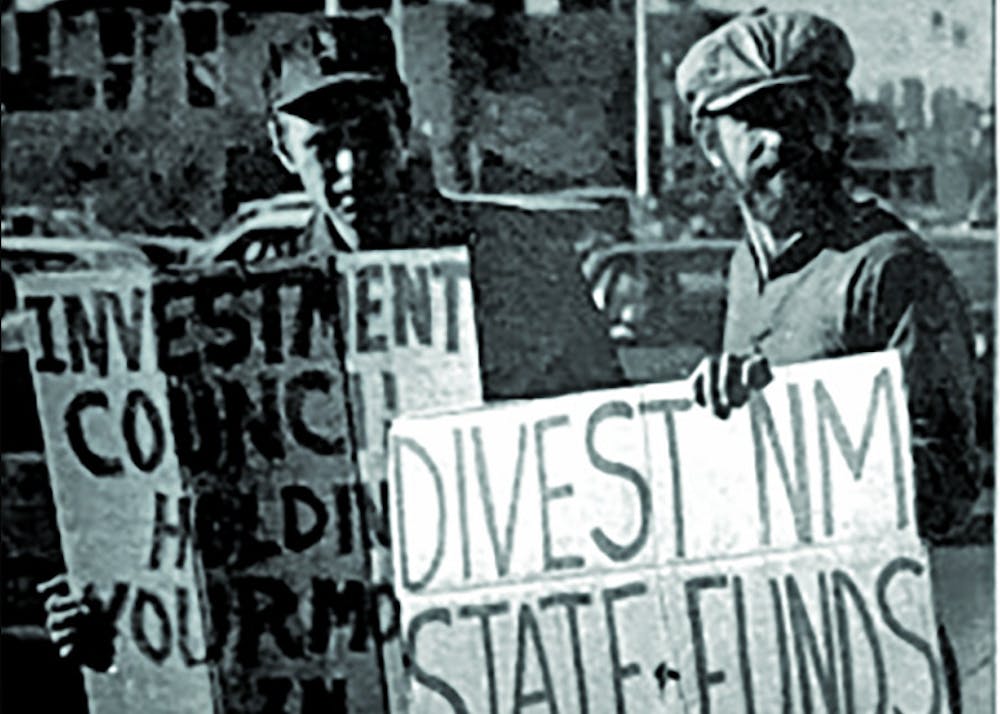On June 11, 1985, the University of New Mexico Board of Regents unanimously voted to divest from gold mines and other investments in apartheid South Africa. This move has been referenced regularly in current pro-Palestine protesters’ calls for University divestment from Israel.
Prior to 1994, South Africa held long-standing policies of racial segregation and the exclusion of all non-white South Africans, according to the African Union. This included forcefully removing Black citizens from their homes and illegalizing interracial marriage, according to South African History Online.
Throughout the 1980s, internal and external pressures to end apartheid in South Africa mounted — as well as the nation’s brutal tactics to suppress the movement, according to the AU.
In the United States, the movement to end South African apartheid occurred partially through universities that sought to end their investments in South Africa.
At UNM, activists from the Black Student Union organized anti-apartheid protests in solidarity with other universities, according to an April 25, 1985 Daily Lobo article.
Michael Smith – then-president of the Black Student Union – and other student leaders distributed red armbands outside of the Student Union Building. The armbands represented the protest movement against UNM’s investments in South Africa, according to the article.
“ASUNM President John Schoeppner, wearing an armband, said of the protest, 'I personally feel that with the urgency of this situation, the students should be more concerned. This is the least we can do,’’” the article reads.
The Regents first publicly discussed the concept of divestment at a meeting on May 7, 1985. UNM invested in multiple South African gold mining companies, granted to the University through the Maxwell Museum of Anthropology, according to the meeting minutes.
“(The stocks) have been held over the years without any conscious decision being made about them,” the meeting minutes read.
An anti-apartheid group at the time estimated UNM’s holdings in South Africa were $1.23 million, according to a June 13, 1985 Daily Lobo article.
The Regents directed what was then called the Finance and Audit Committee to develop a policy statement about the divestment and reinvestment of funds held in South Africa, as well as policies for UNM’s future investments, according to the meeting minutes.
At the following Regents meeting on June 11, Regent Robert Sanchez moved that the Board adopt a divestment resolution. The resolution cited the South African government’s system of racial oppression that violated international law and human rights, according to the meeting minutes.
Get content from The Daily Lobo delivered to your inbox
“The Regents of the University of New Mexico hereby resolve to dissociate the University from any activities which reasonably appear to lend direct or indirect support or assistance to the perpetuation of that country’s racist political order,” the resolution reads.
Marty Esquivel, ASUNM president at the time of the June 11 Regents meeting, acted as a non-voting member on the resolution.
“The ASUNM senate voted on a resolution calling on the Regents to take action in the spring of 1985 and I recall a few campus protests. The administration and Regents were hesitant to endorse the policy, but the movement had reached a critical mass at universities across the country,” Esquivel wrote in a statement to the Daily Lobo.
The Regents would then begin a process of divestment of UNM holdings in companies that invested directly or indirectly in South Africa, according to the resolution. Divestment would be maintained unless and until the South African government brought its policies into compliance with international law, the resolution reads.
The Israel divestment resolution, drafted by the UNM Divestment Coalition – composed of UNM College Democrats, Law Students Against Imperialism and 37 other student organizations and advocacy groups not affiliated with UNM – was modeled after the one adopted in 1985.
“(UNM Secretary-Treasurer John Paez) noted that South Africa is not the only country where human rights are being violated, and he urged that future University policy take into consideration the investments in these countries also,” the June 11, 1985 Regents meeting minutes read.
Lily Alexander is the editor-in-chief of the Daily Lobo. She can be reached at editorinchief@dailylobo.com or on Twitter @llilyalexander
Nate Bernard is a beat reporter with the Daily Lobo. He can be reached at news@dailylobo.com or on Twitter @DailyLobo
Lily Alexander is the 2024-2025 Editor of the Daily Lobo. She can be reached at editorinchief@dailylobo.com or on Twitter @llilyalexander






